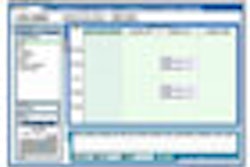ORLANDO - Implementing electronic medical record (EMR) technology dominates priorities among healthcare information technology (IT) professionals, according to the results of a survey released today at the Healthcare Information and Management Systems Society (HIMSS) meeting.
Getting EMR is a top priority for 38% of the 370 healthcare IT professionals who responded to the 19th annual HIMSS Leadership Survey. Other results of the survey are as follows:
|
Dave Garets, president and CEO of HIMSS Analytics of Chicago, credited the Bush Administration's initiative for most Americans to have access to their own EMR by 2014 as the catalyst for EMR implementation. Canada also has launched its own campaign to have half of its population on an EMR by 2010 and all Canadians with EMR access by 2016.
EMR applications
The survey also polled respondents on the most important IT applications for the next two years and, again, EMR-related technologies are at the forefront. Results are as follows:
|
Clinical information systems were cited most often by 45% of the respondents, compared with 46% in 2007. Computerized physician order entry (CPOE) technology was noted by 42%, compared with 47% in 2007, while EMR tallied 31% in the survey, compared with 47% in 2007. Enterprise-wide clinical information system was noted by 30% of the respondents, compared with 35% in 2007.
"The most important application in the next two years is EMR," Garets said. "It's obvious that it will get the lion's share of investment and attention."
Whether U.S. healthcare organizations will reach that plateau by 2014 is debatable. In the roundtable discussion of survey results, Russell Branzell, chief information officer and vice president of information services and human resources at Poudre Valley Health Systems in Fort Collins, CO, does not think the goal will be met -- "mainly because if you look at the investment potential of health systems across the country, the majority are still community-based and rural hospitals," he said. "If you look at medium and larger community health in the urban setting and large academic centers, that's where the majority of EMR investment is happening."
|
Financial support for IT projects remains the biggest hurdle for IT staff. Twenty-six percent of respondents cited the lack of adequate financial support and lack of budget as the most significant barriers to successful implementation at their organization.
IT budgets
At the same time, more than 75% of respondents indicated that their 2008 IT spending will increase. They credited the planned increases to the growth in IT systems and technologies. Respondents who expect their IT budgets to drop cited deteriorating financial conditions at their organization due to reimbursement reductions by Medicare and Medicaid.
While nearly all respondents said their healthcare organization actively assesses and manages its security risk, approximately 25% of the respondents said their facility experienced an internal security breach some time within the last 12 months, and 16% reported an internal breach in the last six months.
Ninety-eight percent of respondents use firewalls for security, followed by user control access and audit logs at 83% and 81%, respectively. Offsite record storage was used by 77% in the survey, while 75% had implemented disaster recovery technology.
Approximately two-thirds of respondents predicted the number of full-time employees (FTEs) in IT departments at their organizations will increase in the next 12 months. These changes will be modest; only 8% predicted a staff increase of more than 20%. The most pressing staff needs are in the areas of clinical application support, network, and architecture support and systems integration.
The HIMSS survey found a lukewarm response to healthcare entities' interest in participating in a regional health information organization (RHIO). Fifty-two percent said they had no plans to participate in an RHIO, compared with 53% in 2007; 26% do participate in an RHIO, compared with 23% in 2007.
By Wayne Forrest
AuntMinnie.com staff writer
February 25, 2008
Related Reading
Regulatory carve-outs hope to spur HIT growth in U.S., February 28, 2007
High-tech communication tools improve patient care, studies find, December 6, 2007
Rhode Island sets off on path for statewide HIT exchange, September 21, 2007
Imaging informatics can contribute much to clinical research, June 11, 2007
Copyright © 2008 AuntMinnie.com



















